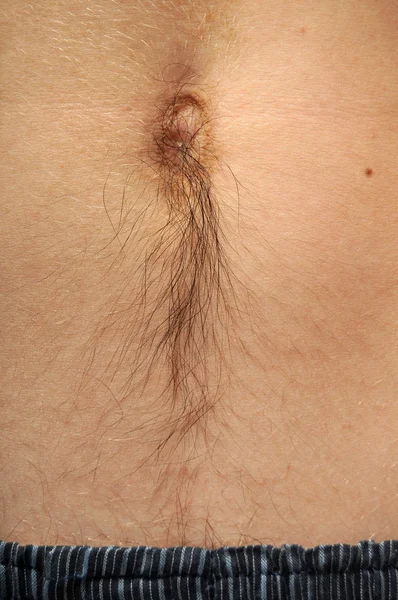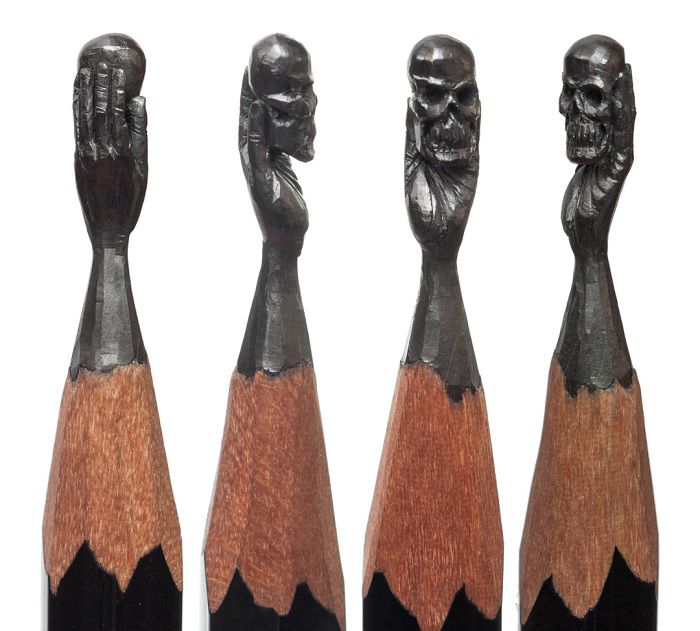Период полового созревания Стоковые фотографии и лицензионные изображения. Картина созревание
Созревание (картина)
«Созревание» норв Pubertet, англ Puberty; в русскоязычных публикациях известна также как «Половое созревание», «Половая зрелость», «Переходный возраст» и «Отроковица» — картина норвежского художника-экспрессиониста Эдварда Мунка, написанная им в 1894 году Более ранняя версия полотна, созданная в 1886 году, пострадала от пожара и не сохранилась1На картине изображена худенькая обнажённая девочка лет четырнадцати, сидящая, скрестив руки на коленях, на неприбранной постели Комната залита светом, но фигура девочки отбрасывает на стену непропорционально большую и тёмную тень Критики отмечали исходящее от этой тени ощущение угрозы, а также её «фаллическую» форму Это внутреннее напряжение усиливается позой девочки, прикрывающей руками низ живота словно в попытке защититься от собственной пробуждающейся сексуальности, и пристально-настороженным взглядом её широко открытых глаз12 Ульрих Бишофф отмечает, что «в период работы Мунка над этой картиной в моду вошли полотна с юными натурщицами, оставлявшие привкус легкой непристойности, однако зловещая тень в сочетании с хрупкой нежностью девочки совершенно исключает подобное истолкование картины Мунка»1 Арне Эггум, обращая внимание на сходство позы девочки с «Созревания» с «Самой прекрасной любовью Дон-Жуана» фр La plus belle amour de Don Juan Фелисьена Ропса, также указывает на разницу в подходах обоих художников и подчёркивает, что Мунк не ставил своей целью «скопировать» Ропса3 Отличающее эту картину сочетание мотивов сексуальности и угрозы, тревоги в целом характерно для творчества Мунка, воспринимавшего половое чувство как могучую, но тёмную и опасную для человека силу; Бишофф отмечает, что «Созревание» во многом предвосхитило его знаменитый «Фриз жизни», где темы сексуальности и страха стали центральными Работу над первыми картинами «Фриза» Мунк начал ещё в начале 1890-x годов, но «Созревание» в него не вошло и впервые было выставлено на отдельной выставке в 1895 году По сообщению биографа Мунка Атле Нэсса, на выставке эта картина спровоцировала небольшой скандал: тени, проложенные по ногам девочки, были красноватого оттенка, и некоторые приняли эти пятна за менструальную кровь Смущенный Мунк, не предполагавший такой интерпретации, впоследствии переработал картину2
Как и многие другие картины Мунка, «Созревание» существует в нескольких вариантах, включая рисунки и гравюру
В культуреправить
- Картина, наряду с «Криком», упоминается в романе Филипа К Дика «Мечтают ли андроиды об электроовцах» Беглая женщина-андроид изображена стоящей перед «картиной с изображением совсем юной обнажённой девушки, сидящей на краю кровати» с «выражением изумления и благоговейного страха» Главный герой романа, охотник за беглыми андроидами, покупает для неё альбом с репродукцией этой работы
Примечанияправить
- ↑ 1 2 3 Ульрих Бишофф Эдвард Мунк TASCHEN/Арт-родник, 2008
- ↑ 1 2 Атле Нэсс Эдвард Мунк: Биография художника Издательство «Весь Мир», 2007
- ↑ Eggum, A, & Munch, E 1979 Edvard Munch: paintings, sketches, and studies New York: CN Potter
| |||||||||
Созревание (картина) Информация о
Созревание (картина)Созревание (картина)Созревание (картина) Информация Видео
Созревание (картина) Просмотр темы.Созревание (картина) что, Созревание (картина) кто, Созревание (картина) объяснение
There are excerpts from wikipedia on this article and video
www.turkaramamotoru.com
Созревание (картина) — Википедия (с комментариями)
Материал из Википедии — свободной энциклопедии
К:Картины 1894 года«Созревание» (норв. Pubertet, англ. Puberty; в русскоязычных публикациях известна также как «Половое созревание», «Половая зрелость», «Переходный возраст» и «Отроковица») — картина норвежского художника-экспрессиониста Эдварда Мунка, написанная им в 1894 году. Более ранняя версия полотна, созданная в 1886 году, пострадала от пожара и не сохранилась[1].
На картине изображена худенькая обнажённая девочка лет четырнадцати, сидящая, скрестив руки на коленях, на неприбранной постели. Комната залита светом, но фигура девочки отбрасывает на стену непропорционально большую и тёмную тень. Критики отмечали исходящее от этой тени ощущение угрозы, а также её «фаллическую» форму. Это внутреннее напряжение усиливается позой девочки, прикрывающей руками низ живота словно в попытке защититься от собственной пробуждающейся сексуальности, и пристально-настороженным взглядом её широко открытых глаз[1][2]. Ульрих Бишофф отмечает, что «в период работы Мунка над этой картиной в моду вошли полотна с юными натурщицами, оставлявшие привкус легкой непристойности, однако зловещая тень в сочетании с хрупкой нежностью девочки совершенно исключает подобное истолкование картины Мунка»[1]. Арне Эггум, обращая внимание на сходство позы девочки с «Созревания» с «Самой прекрасной любовью Дон-Жуана» (фр. La plus belle amour de Don Juan) Фелисьена Ропса, также указывает на разницу в подходах обоих художников и подчёркивает, что Мунк не ставил своей целью «скопировать» Ропса[3]. Отличающее эту картину сочетание мотивов сексуальности и угрозы, тревоги в целом характерно для творчества Мунка, воспринимавшего половое чувство как могучую, но тёмную и опасную для человека силу; Бишофф отмечает, что «Созревание» во многом предвосхитило его знаменитый «Фриз жизни», где темы сексуальности и страха стали центральными. Работу над первыми картинами «Фриза» Мунк начал ещё в начале 1890-x годов, но «Созревание» в него не вошло и впервые было выставлено на отдельной выставке в 1895 году. По сообщению биографа Мунка Атле Нэсса, на выставке эта картина спровоцировала небольшой скандал: тени, проложенные по ногам девочки, были красноватого оттенка, и некоторые приняли эти пятна за менструальную кровь. Смущенный Мунк, не предполагавший такой интерпретации, впоследствии переработал картину[2].
Как и многие другие картины Мунка, «Созревание» существует в нескольких вариантах, включая рисунки и гравюру.
В культуре
- Картина, наряду с «Криком», упоминается в романе Филипа К. Дика «Мечтают ли андроиды об электроовцах?». Беглая женщина-андроид изображена стоящей перед «картиной с изображением совсем юной обнажённой девушки, сидящей на краю кровати» с «выражением изумления и благоговейного страха». Главный герой романа, охотник за беглыми андроидами, покупает для неё альбом с репродукцией этой работы.
Напишите отзыв о статье "Созревание (картина)"
Примечания
- ↑ 1 2 3 Ульрих Бишофф. Эдвард Мунк. TASCHEN/Арт-родник, 2008
- ↑ 1 2 Атле Нэсс. Эдвард Мунк: Биография художника. Издательство «Весь Мир», 2007
- ↑ Eggum, A., & Munch, E. (1979). Edvard Munch: paintings, sketches, and studies. New York: C.N. Potter.
Отрывок, характеризующий Созревание (картина)
– Ну вот, пусть он это смотрит, – тихо прошептала Стелла. – А я покажу тебе, что было дальше... Чудесное видение тихого семейного счастья исчезло... а вместо него появилось другое, жестокое и пугающее, не обещающее ничего хорошего, а уж, тем более – счастливого конца..... Это был всё ещё тот же бело-каменный город, и тот же, уже знакомый нам, дом... Только на этот раз всё вокруг полыхало в огне... Огонь был везде. Ревущее, всё пожирающее пламя вырывалось из разбитых окон и дверей, и охватывало мечущихся в ужасе людей, превращая их в кричащие человеческие факелы, чем создавало преследовавшим их чудовищам удачную живую мишень. Женщины с визгом хватали детей, пытаясь укрыться с ними в подвалах, но спасались они не надолго – спустя короткое время хохочущие изверги тащили их, полуголых и отчаянно вопящих, наружу, чтобы насиловать прямо на улице, рядом с ещё не остывшими трупиками их маленьких детей... От разносящейся по всюду копоти почти ничего не было видно... Воздух был «забит» запахами крови и гари, нечем было дышать. Обезумевшие от страха и жары, прятавшиеся в подвалах старики вылазили во двор и тут же падали мёртвыми под мечами жутко гикающих, носящихся по всему городу на конях, звероподобных диких людей. Вокруг слышался грохот копыт, звон железа, и дикие крики, от которых стыла в жилах кровь... Перед моими глазами, как в кино, проносились страшные, холодящие сердце картинки насилия и зверских убийств... Я не могла на всё это спокойно смотреть, сердце буквально «выпрыгивало» из груди, лоб (как если бы я была в физическом теле!..) покрывался холодной испариной, и хотелось бежать, куда глаза глядят из этого ужасающего, чудовищно-безжалостного мира... Но, взглянув на серьёзно-сосредоточенное личико Стеллы мне стало стыдно за свою слабость, и я заставила себя смотреть дальше. Мы оказались внутри того же самого дома, только сейчас всё в нём было полностью разбито и уничтожено, а посередине одной из комнат, прямо на полу, валялось мёртвое тело доброй няни... Через разбитые окна с улицы слышались душераздирающие женские крики, всё перемешалось в ужасном кошмаре безысходности и страха... Казалось, весь мир вдруг почему-то сошёл с ума... Тут же мы увидели другую комнату, в которой трое мужчин, тяжело навалившись, пытались привязать к ручкам кровати, вырывающуюся из последних сил, светловолосую жену рыцаря Гарольда... А его маленький сын сидел прямо под той же кроватью, сжимая в своих малюсеньких ручках, слишком большой для него, папин кинжал и, закрыв глаза, сосредоточено что-то шептал... Никто во всей этой сумасшедшей суматохе никакого внимания на него не обращал, а он был так странно и «неподвижно» спокоен, что сперва я подумала – с малышом, от всего этого ужаса, случился самый настоящий эмоциональный удар. Но очень скоро поняла, что ошиблась... Как оказалось, ребёнок, попросту, из последних сил пытался собраться для какого-то, видимо очень решительного и важного шага... Он мог свободно дотянуться до любого из насильников, и я сперва подумала, что бедный малыш, думая ещё совершенно по-детски, хочет попытаться как-то защитить свою несчастную маму. Но, как оказалось, этот крошечный, насмерть напуганный мальчонка, был в своей, ещё детской, душе настоящим сыном рыцаря, и сумел сделать самый правильный и единственный в тот жуткий момент вывод... и решился на самый тяжёлый в его коротенькой жизни, шаг... Каким-то образом, наконец, собравшись, и тихо прошептав «мамочка!», он выскочил наружу, и изо всех своих детских силёнок.... полоснул тяжеленным кинжалом прямо по нежной шее свою бедную мать, которую уже никак по-другому не мог спасти, и которую он всем своим детским сердечком беззаветно любил....o-ili-v.ru
Созревание (картина) — википедия орг
«Созревание» (норв. Pubertet, англ. Puberty; в русскоязычных публикациях известна также как «Половое созревание», «Половая зрелость», «Переходный возраст» и «Отроковица») — картина норвежского художника-экспрессиониста Эдварда Мунка, написанная им в 1894 году. Более ранняя версия полотна, созданная в 1886 году, пострадала от пожара и не сохранилась[1].
На картине изображена худенькая обнажённая девочка лет четырнадцати, сидящая, скрестив руки на коленях, на неприбранной постели. Комната залита светом, но фигура девочки отбрасывает на стену непропорционально большую и тёмную тень. Критики отмечали исходящее от этой тени ощущение угрозы, а также её «фаллическую» форму. Это внутреннее напряжение усиливается позой девочки, прикрывающей руками низ живота словно в попытке защититься от собственной пробуждающейся сексуальности, и пристально-настороженным взглядом её широко открытых глаз[1][2]. Ульрих Бишофф отмечает, что «в период работы Мунка над этой картиной в моду вошли полотна с юными натурщицами, оставлявшие привкус легкой непристойности, однако зловещая тень в сочетании с хрупкой нежностью девочки совершенно исключает подобное истолкование картины Мунка»[1]. Арне Эггум, обращая внимание на сходство позы девочки с «Созревания» с «Самой прекрасной любовью Дон-Жуана» (фр. La plus belle amour de Don Juan) Фелисьена Ропса, также указывает на разницу в подходах обоих художников и подчёркивает, что Мунк не ставил своей целью «скопировать» Ропса[3]. Отличающее эту картину сочетание мотивов сексуальности и угрозы, тревоги в целом характерно для творчества Мунка, воспринимавшего половое чувство как могучую, но тёмную и опасную для человека силу; Бишофф отмечает, что «Созревание» во многом предвосхитило его знаменитый «Фриз жизни», где темы сексуальности и страха стали центральными. Работу над первыми картинами «Фриза» Мунк начал ещё в начале 1890-x годов, но «Созревание» в него не вошло и впервые было выставлено на отдельной выставке в 1895 году. По сообщению биографа Мунка Атле Нэсса, на выставке эта картина спровоцировала небольшой скандал: тени, проложенные по ногам девочки, были красноватого оттенка, и некоторые приняли эти пятна за менструальную кровь. Смущенный Мунк, не предполагавший такой интерпретации, впоследствии переработал картину[2].
Как и многие другие картины Мунка, «Созревание» существует в нескольких вариантах, включая рисунки и гравюру.
www-wikipediya.ru
Созревание (картина) - WikiVisually
1. Мунк, Эдвард – One of his best known works is The Scream of 1893. Edvard Munch was born in a farmhouse in the village of Ådalsbruk in Løten, United Kingdoms of Sweden and Norway, to Laura Catherine Bjølstad and Christian Munch, Christian was a doctor and medical officer who married Laura, a woman half his age, in 1861. Edvard had a sister, Johanne Sophie, and three younger siblings, Peter Andreas, Laura Catherine, and Inger Marie. Both Sophie and Edvard appear to have inherited their artistic talent from their mother, Edvard Munch was related to painter Jacob Munch and historian Peter Andreas Munch. The family moved to Christiania in 1864 when Christian Munch was appointed medical officer at Akershus Fortress, Edvards mother died of tuberculosis in 1868, as did Munchs favorite sister Johanne Sophie in 1877. After their mothers death, the Munch siblings were raised by their father, often ill for much of the winters and kept out of school, Edvard would draw to keep himself occupied. He was tutored by his mates and his aunt. Christian Munch also instructed his son in history and literature, and entertained the children with vivid ghost-stories, as Edvard remembered it, Christians positive behavior toward his children was overshadowed by his morbid pietism. Munch wrote, My father was temperamentally nervous and obsessively religious—to the point of psychoneurosis, from him I inherited the seeds of madness. The angels of fear, sorrow, and death stood by my side since the day I was born, Christian reprimanded his children by telling them that their mother was looking down from heaven and grieving over their misbehavior. The oppressive religious milieu, plus Edvards poor health and the vivid ghost stories, helped inspire his macabre visions and nightmares, one of Munchs younger sisters, Laura, was diagnosed with mental illness at an early age. Of the five siblings, only Andreas married, but he died a few months after the wedding, Munch would later write, I inherited two of mankinds most frightful enemies—the heritage of consumption and insanity. Christian Munchs military pay was low, and his attempts to develop a private side practice failed, keeping his family in genteel. They moved frequently from one flat to another. Munchs early drawings and watercolors depicted these interiors, and the objects, such as medicine bottles and drawing implements. By his teens, art dominated Munchs interests, at thirteen, Munch had his first exposure to other artists at the newly formed Art Association, where he admired the work of the Norwegian landscape school. He returned to copy the paintings, and soon he began to paint in oils, in 1879, Munch enrolled in a technical college to study engineering, where he excelled in physics, chemistry and math. He learned scaled and perspective drawing, but frequent illnesses interrupted his studies, the following year, much to his fathers disappointment, Munch left the college determined to become a painter
2. Национальный музей искусства, архитектуры и дизайна – The National Museum of Art, Architecture and Design in Oslo is the national museum of art of Norway. Its directors have been Sune Nordgren, Anne Kjellberg, Allis Helleland, Ingar Pettersen, chairmen of the board have been Christian Bjelland and Svein Aaser. Among its collection is one of the versions of The Scream by Edvard Munch, a major reconstruction is planned for the National Museum. In 2020 this will integrate The National Museum of Art, Architecture and this will be placed in the location of the old Oslo West Station train station at Bjørvika. The building will open in 2020, with an exhibition area 13,000 m², architect is Kleihues + Schuwerk Gesellschaftvon Architekten mbH. Ramboll is technical advisor and builders enigineer on the project, official website New National Museum project description
3. Осло – Oslo is the capital and the most populous city in Norway. It constitutes both a county and a municipality, founded in the year 1040, and established as a kaupstad or trading place in 1048 by Harald Hardrada, the city was elevated to a bishopric in 1070 and a capital under Haakon V of Norway around 1300. Personal unions with Denmark from 1397 to 1523 and again from 1536 to 1814, after being destroyed by a fire in 1624, the city was moved closer to Akershus Fortress during the reign of Christian IV of Denmark and renamed Christiania in his honour. It was established as a municipality on 1 January 1838, following a spelling reform, it was known as Kristiania from 1877 to 1925, at which time its original Norwegian name was restored. Oslo is the economic and governmental centre of Norway, the city is also a hub of Norwegian trade, banking, industry and shipping. It is an important centre for industries and maritime trade in Europe. The city is home to companies within the maritime sector, some of which are among the worlds largest shipping companies, shipbrokers. Oslo is a city of the Council of Europe and the European Commission intercultural cities programme. Oslo is considered a city and ranked Beta World City in studies carried out by the Globalization and World Cities Study Group. It was ranked one in terms of quality of life among European large cities in the European Cities of the Future 2012 report by fDi magazine. A survey conducted by ECA International in 2011 placed Oslo as the second most expensive city in the world for living expenses after Tokyo. In 2013 Oslo tied with the Australian city of Melbourne as the fourth most expensive city in the world, as of January 1,2016, the municipality of Oslo has a population of 658,390, while the population of the citys urban area was 942,084. The metropolitan area had an population of 1.71 million. The population was during the early 2000 increasing at record rates and this growth stems for the most part from international immigration and related high birth rates, but also from intra-national migration. The immigrant population in the city is growing faster than the Norwegian population. As of January 1,2016, the municipality of Oslo has a population of 658,390, the urban area extends beyond the boundaries of the municipality into the surrounding county of Akershus, the total population of this agglomeration is 942,084. To the north and east, wide forested hills rise above the city giving the location the shape of a giant amphitheatre. The urban municipality of Oslo and county of Oslo are two parts of the entity, making Oslo the only city in Norway where two administrative levels are integrated
4. Норвегия – The Antarctic Peter I Island and the sub-Antarctic Bouvet Island are dependent territories and thus not considered part of the Kingdom. Norway also lays claim to a section of Antarctica known as Queen Maud Land, until 1814, the kingdom included the Faroe Islands, Greenland, and Iceland. It also included Isle of Man until 1266, Shetland and Orkney until 1468, Norway has a total area of 385,252 square kilometres and a population of 5,258,317. The country shares a long border with Sweden. Norway is bordered by Finland and Russia to the north-east, Norway has an extensive coastline, facing the North Atlantic Ocean and the Barents Sea. King Harald V of the Dano-German House of Glücksburg is the current King of Norway, erna Solberg became Prime Minister in 2013, replacing Jens Stoltenberg. A constitutional monarchy, Norway divides state power between the Parliament, the Cabinet and the Supreme Court, as determined by the 1814 Constitution, the kingdom is established as a merger of several petty kingdoms. By the traditional count from the year 872, the kingdom has existed continuously for 1,144 years, Norway has both administrative and political subdivisions on two levels, counties and municipalities. The Sámi people have an amount of self-determination and influence over traditional territories through the Sámi Parliament. Norway maintains close ties with the European Union and the United States, the country maintains a combination of market economy and a Nordic welfare model with universal health care and a comprehensive social security system. Norway has extensive reserves of petroleum, natural gas, minerals, lumber, seafood, the petroleum industry accounts for around a quarter of the countrys gross domestic product. On a per-capita basis, Norway is the worlds largest producer of oil, the country has the fourth-highest per capita income in the world on the World Bank and IMF lists. On the CIAs GDP per capita list which includes territories and some regions, from 2001 to 2006, and then again from 2009 to 2017, Norway had the highest Human Development Index ranking in the world. It also has the highest inequality-adjusted ranking, Norway ranks first on the World Happiness Report, the OECD Better Life Index, the Index of Public Integrity and the Democracy Index. Norway has two names, Noreg in Nynorsk and Norge in Bokmål. The name Norway comes from the Old English word Norðrveg mentioned in 880, meaning way or way leading to the north. In contrasting with suðrvegar southern way for Germany, and austrvegr eastern way for the Baltic, the Anglo-Saxon of Britain also referred to the kingdom of Norway in 880 as Norðmanna land. This was the area of Harald Fairhair, the first king of Norway, and because of him
5. Экспрессионизм – Expressionism was a modernist movement, initially in poetry and painting, originating in Germany at the beginning of the 20th century. Its typical trait is to present the world solely from a subjective perspective, Expressionist artists sought to express the meaning of emotional experience rather than physical reality. Expressionism was developed as an avant-garde style before the First World War and it remained popular during the Weimar Republic, particularly in Berlin. The style extended to a range of the arts, including expressionist architecture, painting, literature, theatre, dance, film. The term is sometimes suggestive of angst, in a general sense, painters such as Matthias Grünewald and El Greco are sometimes termed expressionist, though in practice the term is applied mainly to 20th-century works. The Expressionist emphasis on individual perspective has been characterized as a reaction to positivism, though an alternate view is that the term was coined by the Czech art historian Antonin Matějček in 1910, as the opposite of impressionism, An Expressionist wishes, above all, to express himself. Immediate perception and builds on more complex psychic structures, in 1905, a group of four German artists, led by Ernst Ludwig Kirchner, formed Die Brücke in the city of Dresden. This was arguably the founding organization for the German Expressionist movement, a few years later, in 1911, a like-minded group of young artists formed Der Blaue Reiter in Munich. The name came from Wassily Kandinskys Der Blaue Reiter painting of 1903, among their members were Kandinsky, Franz Marc, Paul Klee, and Auguste Macke. However, the term Expressionism did not firmly establish itself until 1913, though mainly a German artistic movement initially and most predominant in painting, poetry and the theatre between 1910–30, most precursors of the movement were not German. Expressionism is notoriously difficult to define, in part because it overlapped with other major isms of the modernist period, with Futurism, Vorticism, Cubism, Surrealism, more explicitly, that the expressionists rejected the ideology of realism. The term refers to a style in which the artist seeks to depict not objective reality but rather the subjective emotions. It is arguable that all artists are expressive but there are examples of art production in Europe from the 15th century onward which emphasize extreme emotion. Expressionism has been likened to Baroque by critics such as art historian Michel Ragon, according to Alberto Arbasino, a difference between the two is that Expressionism doesnt shun the violently unpleasant effect, while Baroque does. Expressionism throws some terrific fuck yous, Baroque doesnt, brazil, Anita Malfatti, Cândido Portinari, Di Cavalcanti, Iberê Camargo and Lasar Segall. Estonia, Konrad Mägi, Eduard Wiiralt Finland, Tyko Sallinen, Alvar Cawén, Juho Mäkelä, there were a number of groups of expressionist painters, including Der Blaue Reiter and Die Brücke. Der Blaue Reiter was based in Munich and Die Brücke was based originally in Dresden, Die Brücke was active for a longer period than Der Blaue Reiter, which was only together for a year. The Expressionists had many influences, among them Edvard Munch, Vincent van Gogh and they were also aware of the work being done by the Fauves in Paris, who influenced Expressionisms tendency toward arbitrary colours and jarring compositions
6. Фаллос – A phallus is a penis, especially when erect, an object that resembles a penis, or a mimetic image of an erect penis. Any object that symbolically—or, more precisely, iconically—resembles a penis may also be referred to as a phallus, however, such symbols often represent fertility and cultural implications that are associated with the male sexual organ, as well as the male orgasm. The term is a loanword from Latin phallus, itself borrowed from Greek φαλλός, compare with Old Norse boli bull, Old English bulluc bullock, Greek φαλλή whale. The Hohle phallus, a 28, 000-year-old siltstone phallus discovered in the Hohle Fels cave, in traditional Greek mythology, Hermes, god of boundaries and exchange is considered to be a phallic deity by association with representations of him on herms featuring a phallus. There is no consensus on this depiction and it would be speculation to consider Hermes a type of fertility god. Pan, son of Hermes, was depicted as having an exaggerated erect phallus. Priapus is a Greek god of fertility whose symbol was an exaggerated phallus, the son of Aphrodite and either Dionysus or Adonis, according to different forms of the original myth, he is the protector of livestock, fruit plants, gardens, and male genitalia. His name is the origin of the medical term priapism, the city of Tyrnavos in Greece holds an annual Phallus festival, a traditional phallophoric event on the first days of Lent. The phallus was ubiquitous in ancient Roman culture, particularly in the form of the fascinum, the ruins of Pompeii produced bronze wind chimes that featured the phallus, often in multiples, to ward off the evil eye and other malevolent influences. Statues of Priapus similarly guarded gardens, Roman boys wore the bulla, an amulet that contained a phallic charm, until they formally came of age. According to Augustine of Hippo, the cult of Father Liber, the phallic deity Mutunus Tutunus promoted marital sex. A sacred phallus was among the objects considered vital to the security of the Roman state which were in the keeping of the Vestal Virgins, sexuality in ancient Rome has sometimes been characterized as phallocentric. Evidence of phallic worship in India dates back to prehistoric times, stone Lingams with several varieties of stylized heads, or the glans, are found to this date in many of the old temples, and in museums in India and abroad. The almost naturalistic giant lingam is distinguished by its prominent, bulbous glans, linguistic evidence indicates that the post-Vedic Hindus not only adopted the tradition/ cult of the linga from the pre-Vedic non-Aryans, but even the term itself is of Austric origin. Chakravarti further says that when two words entered Sanskrit, they, along with another word langula were derivations of the same root syllable lang or lng. Stone lingams have been found in several Indus Civilization sites, varying in size from 3 feet in length to very small pieces and these are found to be of steatite, sandstone and burnt clay. Some among these are unmistakably naturalistic in their rendition, Phallic worship was prevalent in India from the Chalcolithic period itself, and it was closely associated with magical rites based religion of that time. The phallus played a role in the cult of Osiris in ancient Egyptian religion, supposedly, Isis made a wooden replacement
7. Менструация – Menstruation, also known as a period or monthly, is the regular discharge of blood and mucosal tissue from the inner lining of the uterus through the vagina. The first period usually begins between twelve and fifteen years of age, a point in time known as menarche, however, periods may occasionally start as young as eight years old and still be considered normal. The average age of the first period is later in the developing world. The typical length of time between the first day of one period and the first day of the next is 21 to 45 days in young women, bleeding usually lasts around 2 to 7 days. Menstruation stops occurring after menopause, which occurs between 45 and 55 years of age. Periods also stop during pregnancy and typically do not resume during the months of breastfeeding. Up to 80% of women report having some symptoms prior to menstruation, common signs and symptoms include acne, tender breasts, bloating, feeling tired, irritability, and mood changes. These may interfere with life, therefore qualifying as premenstrual syndrome. In 3 to 8%, symptoms are severe, a lack of periods, known as amenorrhea, is when periods do not occur by age 15 or have not occurred in 90 days. Other problems with the cycle include painful periods and abnormal bleeding such as bleeding between periods or heavy bleeding. Menstruation in other animals occurs in primates, such as apes and monkeys, as well as bats, the menstrual cycle occurs due to the rise and fall of hormones. This cycle results in the thickening of the lining of the uterus, the egg is released from an ovary around day fourteen in the cycle, the thickened lining of the uterus provides nutrients to an embryo after implantation. If pregnancy does not occur, the lining is released in what is known as menstruation, the first menstrual period occurs after the onset of pubertal growth, and is called menarche. The average age of menarche is 12 to 15, however, it may start as early as eight. The average age of the first period is later in the developing world. The average age of menarche has changed little in the United States since the 1950s, Menstruation is the most visible phase of the menstrual cycle and its beginning is used as the marker between cycles. The first day of bleeding is the date used for the last menstrual period. The typical length of time between the first day of one period and the first day of the next is 21 to 45 days in young women, the medical definition of menopause is one year without a period and typically occurs between 45 and 55 in Western countries
8. Крик (картина Мунка) – The Scream is the popular name given to each of four versions of a composition, created as both paintings and pastels, by Norwegian Expressionist artist Edvard Munch between 1893 and 1910. The German title Munch gave these works is Der Schrei der Natur, the works show a figure with an agonized expression against a landscape with a tumultuous orange sky. Arthur Lubow has described The Scream as an icon of modern art, Edvard Munch created the four versions in various media. The National Gallery in Oslo, Norway, holds one of two painted versions, the Munch Museum holds the other painted version and a pastel version from 1893. These three versions have not traveled for years, the fourth version was sold for $119,922,600 at Sothebys Impressionist and Modern Art auction on 2 May 2012 to financier Leon Black, the fourth highest nominal price paid for a painting at auction. The painting was on display in the Museum of Modern Art in New York from October 2012 to April 2013, also in 1895, Munch created a lithograph stone of the image. Of the lithograph prints produced by Munch, several examples survive, only approximately four dozen prints were made before the original stone was resurfaced by the printer in Munchs absence. The Scream has been the target of several high-profile art thefts, in 1994, the version in the National Gallery was stolen. It was recovered months later. In 2004, both The Scream and Madonna were stolen from the Munch Museum, and were recovered two years later. The original German title given by Munch to his work was Der Schrei der Natur, the Norwegian word skrik usually is translated as scream, but is cognate with the English shriek. Occasionally, the painting also has been called The Cry and he later described his inspiration for the image, One evening I was walking along a path, the city was on one side and the fjord below. I stopped and looked out over the sun was setting. I sensed a scream passing through nature, it seemed to me that I heard the scream, I painted this picture, painted the clouds as actual blood. This explanation has been disputed by scholars, who note that Munch was a painter and was not primarily interested in literal renderings of what he had seen. Alternatively, it has suggested that the proximity of both a slaughterhouse and a lunatic asylum to the site depicted in the painting may have offered some inspiration. The scene was identified as being the view from a road overlooking Oslo, at the time of painting the work, Munchs manic depressive sister Laura Catherine was a patient at the asylum at the foot of Ekeberg. In 2004, an Italian anthropologist speculated that Munch might have seen a mummy in Florences Museum of Natural History, nonetheless, later studies have confirmed Rosenblums suggestion, disproving the Italian theory, for Munch had not been to Florence until after painting The Scream
9. Дик, Филип Киндред – Philip Kindred Dick was an American writer, who published works mainly belonging to the genre of science fiction. Born in Illinois before moving to California, Dick began publishing science fiction stories in the 1950s and his 1962 alternate history novel The Man in the High Castle earned Dick early acclaim, including a Hugo Award for Best Novel. He followed with science fiction such as Do Androids Dream of Electric Sheep. His 1974 novel Flow My Tears, the Policeman Said won the John W. Campbell Memorial Award for best novel, a collection of his non-fiction writing on these themes was published posthumously as The Exegesis of Philip K. Dick. He died in 1982 of a stroke, aged 53, in addition to 44 published novels, Dick wrote approximately 121 short stories, most of which appeared in science fiction magazines during his lifetime. A variety of films based on his works have been produced, including Blade Runner, Total Recall, Minority Report, A Scanner Darkly, Paycheck, Next. In 2005, Time magazine named Ubik one of the hundred greatest English-language novels published since 1923, in 2007, Dick became the first science fiction writer to be included in The Library of America series. The death of Jane six weeks later, on January 26,1929, profoundly affected Philips life and his family later moved to the San Francisco Bay Area. When Philip was five, his father was transferred to Reno, Nevada, both parents fought for custody of Philip, which was awarded to the mother. Dorothy, determined to raise Philip alone, took a job in Washington, D. C. Philip was enrolled at John Eaton Elementary School, completing the second through fourth grades. His lowest grade was a C in Written Composition, although a teacher remarked that he shows interest and he was educated in Quaker schools. In June 1938, Dorothy and Philip returned to California, Dick stated that he read his first science fiction magazine, Stirring Science Stories in 1940 at the age of twelve. Dick attended Berkeley High School in Berkeley, California and he and fellow science fiction author Ursula K. Le Guin were members of the graduating class but did not know each other at the time. After graduation, he attended the University of California, Berkeley. Dick did not declare a major and took classes in history, psychology, philosophy and this question from his early studies persisted as a theme in many of his novels. Dick dropped out because of ongoing anxiety problems, according to his third wife Annes memoir and she also says he disliked the mandatory ROTC training. At Berkeley, Dick befriended poet Robert Duncan and poet and linguist Jack Spicer, Dick claimed to have been host of a classical music program on KSMO Radio in 1947
wikivisually.com
Созревание (картина) - Gpedia, Your Encyclopedia
«Созревание» (норв. Pubertet, англ. Puberty; в русскоязычных публикациях известна также как «Половое созревание», «Половая зрелость», «Переходный возраст» и «Отроковица») — картина норвежского художника-экспрессиониста Эдварда Мунка, написанная им в 1894 году. Более ранняя версия полотна, созданная в 1886 году, пострадала от пожара и не сохранилась[2].
На картине изображена худенькая обнажённая девочка лет четырнадцати, сидящая, скрестив руки на коленях, на неприбранной постели. Комната залита светом, но фигура девочки отбрасывает на стену непропорционально большую и тёмную тень. Критики отмечали исходящее от этой тени ощущение угрозы, а также её «фаллическую» форму. Это внутреннее напряжение усиливается позой девочки, прикрывающей руками низ живота словно в попытке защититься от собственной пробуждающейся сексуальности, и пристально-настороженным взглядом её широко открытых глаз[2][3]. Ульрих Бишофф отмечает, что «в период работы Мунка над этой картиной в моду вошли полотна с юными натурщицами, оставлявшие привкус легкой непристойности, однако зловещая тень в сочетании с хрупкой нежностью девочки совершенно исключает подобное истолкование картины Мунка»[2]. Арне Эггум, обращая внимание на сходство позы девочки с «Созревания» с «Самой прекрасной любовью Дон-Жуана» (фр. La plus belle amour de Don Juan) Фелисьена Ропса, также указывает на разницу в подходах обоих художников и подчёркивает, что Мунк не ставил своей целью «скопировать» Ропса[4]. Отличающее эту картину сочетание мотивов сексуальности и угрозы, тревоги в целом характерно для творчества Мунка, воспринимавшего половое чувство как могучую, но тёмную и опасную для человека силу; Бишофф отмечает, что «Созревание» во многом предвосхитило его знаменитый «Фриз жизни», где темы сексуальности и страха стали центральными. Работу над первыми картинами «Фриза» Мунк начал ещё в начале 1890-x годов, но «Созревание» в него не вошло и впервые было выставлено на отдельной выставке в 1895 году. По сообщению биографа Мунка Атле Нэсса, на выставке эта картина спровоцировала небольшой скандал: тени, проложенные по ногам девочки, были красноватого оттенка, и некоторые приняли эти пятна за менструальную кровь. Смущенный Мунк, не предполагавший такой интерпретации, впоследствии переработал картину[3].
Как и многие другие картины Мунка, «Созревание» существует в нескольких вариантах, включая рисунки и гравюру.
В культуре
- Картина, наряду с «Криком», упоминается в романе Филипа К. Дика «Мечтают ли андроиды об электроовцах?». Беглая женщина-андроид изображена стоящей перед «картиной с изображением совсем юной обнажённой девушки, сидящей на краю кровати» с «выражением изумления и благоговейного страха». Главный герой романа, охотник за беглыми андроидами, покупает для неё альбом с репродукцией этой работы.
Примечания
- ↑ 1 2 http://samling.nasjonalmuseet.no/en/object/NG.M.00807
- ↑ 1 2 3 Ульрих Бишофф. Эдвард Мунк. TASCHEN/Арт-родник, 2008
- ↑ 1 2 Атле Нэсс. Эдвард Мунк: Биография художника. Издательство «Весь Мир», 2007
- ↑ Eggum, A., & Munch, E. (1979). Edvard Munch: paintings, sketches, and studies. New York: C.N. Potter.
www.gpedia.com
WikiZero - Созревание (картина)
 Wikipedia Open wikipedia design.
Wikipedia Open wikipedia design.«Созревание» (норв. Pubertet, англ. Puberty; в русскоязычных публикациях известна также как «Половое созревание», «Половая зрелость», «Переходный возраст» и «Отроковица») — картина норвежского художника-экспрессиониста Эдварда Мунка, написанная им в 1894 году. Более ранняя версия полотна, созданная в 1886 году, пострадала от пожара и не сохранилась[2].
На картине изображена худенькая обнажённая девочка лет четырнадцати, сидящая, скрестив руки на коленях, на неприбранной постели. Комната залита светом, но фигура девочки отбрасывает на стену непропорционально большую и тёмную тень. Критики отмечали исходящее от этой тени ощущение угрозы, а также её «фаллическую» форму. Это внутреннее напряжение усиливается позой девочки, прикрывающей руками низ живота словно в попытке защититься от собственной пробуждающейся сексуальности, и пристально-настороженным взглядом её широко открытых глаз[2][3]. Ульрих Бишофф отмечает, что «в период работы Мунка над этой картиной в моду вошли полотна с юными натурщицами, оставлявшие привкус легкой непристойности, однако зловещая тень в сочетании с хрупкой нежностью девочки совершенно исключает подобное истолкование картины Мунка»[2]. Арне Эггум, обращая внимание на сходство позы девочки с «Созревания» с «Самой прекрасной любовью Дон-Жуана» (фр. La plus belle amour de Don Juan) Фелисьена Ропса, также указывает на разницу в подходах обоих художников и подчёркивает, что Мунк не ставил своей целью «скопировать» Ропса[4]. Отличающее эту картину сочетание мотивов сексуальности и угрозы, тревоги в целом характерно для творчества Мунка, воспринимавшего половое чувство как могучую, но тёмную и опасную для человека силу; Бишофф отмечает, что «Созревание» во многом предвосхитило его знаменитый «Фриз жизни», где темы сексуальности и страха стали центральными. Работу над первыми картинами «Фриза» Мунк начал ещё в начале 1890-x годов, но «Созревание» в него не вошло и впервые было выставлено на отдельной выставке в 1895 году. По сообщению биографа Мунка Атле Нэсса, на выставке эта картина спровоцировала небольшой скандал: тени, проложенные по ногам девочки, были красноватого оттенка, и некоторые приняли эти пятна за менструальную кровь. Смущенный Мунк, не предполагавший такой интерпретации, впоследствии переработал картину[3].
Как и многие другие картины Мунка, «Созревание» существует в нескольких вариантах, включая рисунки и гравюру.
- Картина, наряду с «Криком», упоминается в романе Филипа К. Дика «Мечтают ли андроиды об электроовцах?». Беглая женщина-андроид изображена стоящей перед «картиной с изображением совсем юной обнажённой девушки, сидящей на краю кровати» с «выражением изумления и благоговейного страха». Главный герой романа, охотник за беглыми андроидами, покупает для неё альбом с репродукцией этой работы.
www.wikizero.com
Картинки период полового созревания, Стоковые Фотографии и Роялти-Фри Изображения период полового созревания














pozitivstudija
2912 x 4368



















KatarinaGondova
4899 x 3245











stevanovicigor
2860 x 4284



ru.depositphotos.com







